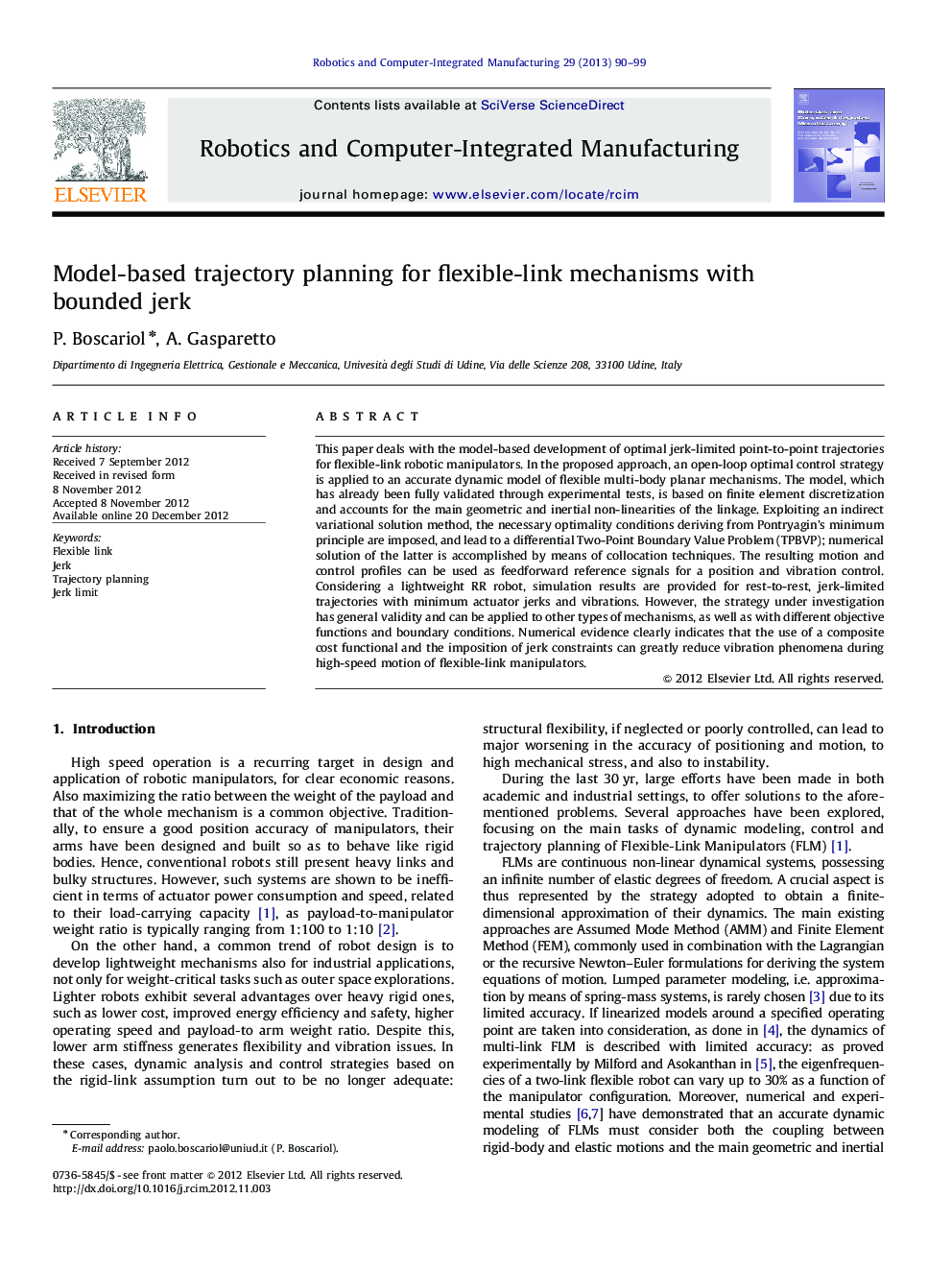| کد مقاله | کد نشریه | سال انتشار | مقاله انگلیسی | نسخه تمام متن |
|---|---|---|---|---|
| 413994 | 680778 | 2013 | 10 صفحه PDF | دانلود رایگان |

This paper deals with the model-based development of optimal jerk-limited point-to-point trajectories for flexible-link robotic manipulators. In the proposed approach, an open-loop optimal control strategy is applied to an accurate dynamic model of flexible multi-body planar mechanisms. The model, which has already been fully validated through experimental tests, is based on finite element discretization and accounts for the main geometric and inertial non-linearities of the linkage. Exploiting an indirect variational solution method, the necessary optimality conditions deriving from Pontryagin's minimum principle are imposed, and lead to a differential Two-Point Boundary Value Problem (TPBVP); numerical solution of the latter is accomplished by means of collocation techniques. The resulting motion and control profiles can be used as feedforward reference signals for a position and vibration control. Considering a lightweight RR robot, simulation results are provided for rest-to-rest, jerk-limited trajectories with minimum actuator jerks and vibrations. However, the strategy under investigation has general validity and can be applied to other types of mechanisms, as well as with different objective functions and boundary conditions. Numerical evidence clearly indicates that the use of a composite cost functional and the imposition of jerk constraints can greatly reduce vibration phenomena during high-speed motion of flexible-link manipulators.
► The algorithm is based on the solution of a Two-Point Boundary Value Problem (TPBVP).
► The algorithm introduced is based on the solution of a Two-Point Boundary Value Problem (TPBVP).
► Modeling is based on the Finite Element Method, and the resulting model is non-linear .
► Limits on jerk are introduced into the optimization problem.
► We show that jerk limits reduce the maximum amplitude of elastic displacements.
Journal: Robotics and Computer-Integrated Manufacturing - Volume 29, Issue 4, August 2013, Pages 90–99